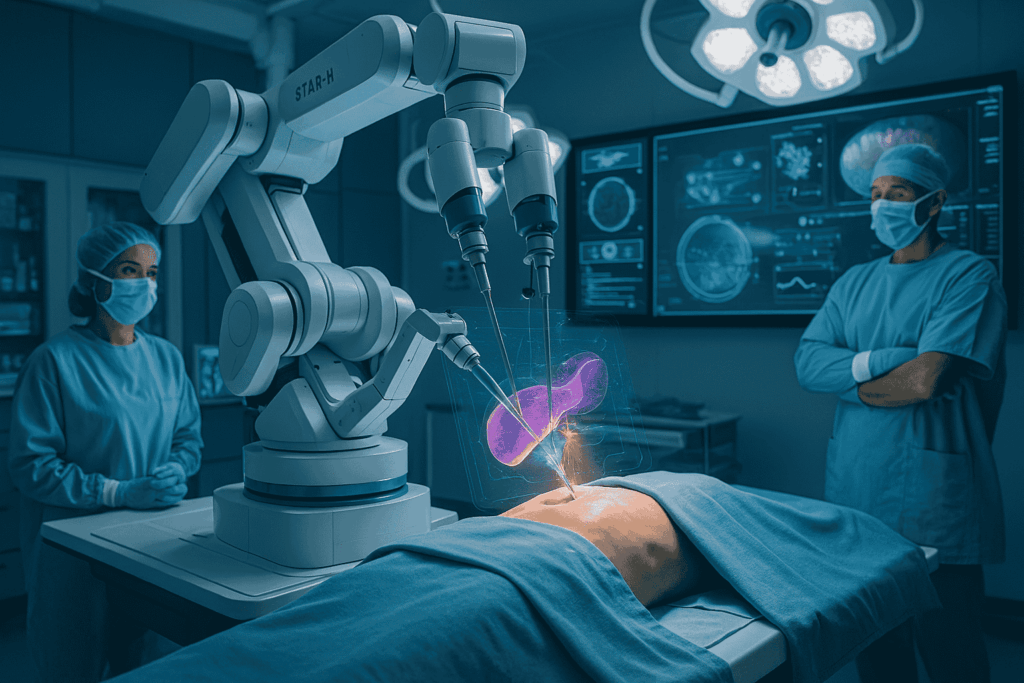
『 ZORO 』
5 months ago
Autonomous Surgical Robot Performs Gallbladder Surgery
This milestone demonstrates the convergence of robotics and artificial intelligence in medicine. It marks a new era where autonomous surgical robot could soon assist or even lead complex procedures, reducing errors and improving global access to care.

🤖 What Is an Autonomous Surgical Robot?
An autonomous surgical robot operates independently—making decisions, adjusting to situations, and carrying out surgical tasks without real-time human input. Unlike conventional systems, SRT-H was trained on videos and voice commands from expert surgeons, allowing it to mimic and respond like a skilled resident .
🧩 How SRT-H Pulled It Off
- Training: SRT-H absorbed hours of surgical footage on porcine gallbladders, learning each step, tool movement, tissue response, and procedural nuance .
- Real-Time Adaptation: Using imitation learning and hierarchical language-conditioned models, the robot recognized ducts, applied clips, and made precise cuts—even in altered conditions like dyed tissue.
- Performance: In eight ex vivo procedures, SRT-H achieved a perfect success rate, adjusting for unexpected changes without manual intervention .
🌍 Why This Breakthrough Matters
✅ Consistency and Precision
Traditional robotic surgery relies on human control. SRT-H's autonomy could standardize procedures and reduce human error.
🌐 Greater Access to Care
Autonomous systems may bring high-quality surgical care to remote or underserved areas with fewer expert surgeons.
💡 Scalability and Efficiency
Once regulatory pathways are cleared, autonomous surgical robots could enable a single clinician to supervise multiple simultaneous procedures.
🧠 Expert Reactions
Axel Krieger, lead researcher:
“This advancement moves us from task-specific robots to systems that truly understand procedures.”
Dr. Nuha Yassin, Royal College of Surgeons, UK:
“Caution is necessary. We must explore tissue variability, live scenarios, and patient safety before human trials.”
AICERTs™ AI+ Robotics™ Certification is designed to equip professionals with the knowledge and skills to integrate AI technologies with robotic systems. This program covers machine learning, robotics process automation, computer vision, and deep learning techniques essential for building intelligent robotic systems capable of operating in complex environments. Graduates of this program will be well-prepared to innovate in industries such as healthcare, logistics, and manufacturing.
📘 Conclusion
The emergence of the autonomous surgical robot SRT-H marks a significant leap toward a future where robots could undertake surgeries with minimal oversight. While there are major technological and regulatory hurdles ahead, this innovation paves the way for safer, more efficient, and more accessible healthcare globally.
Sources-



